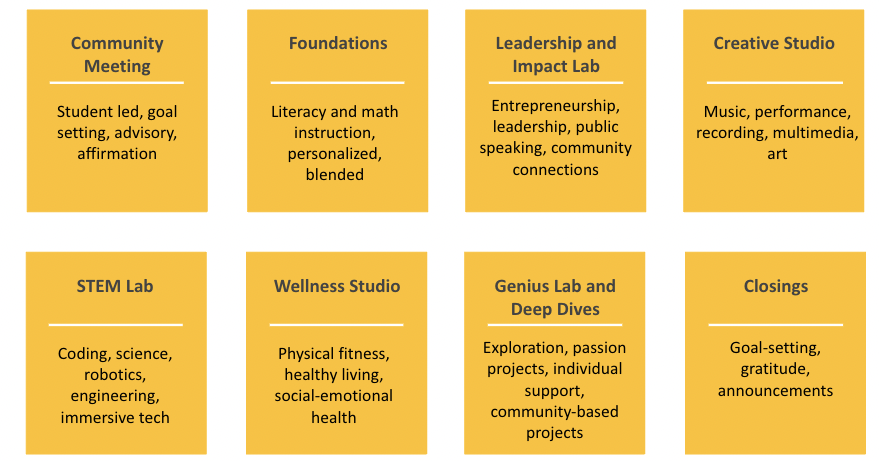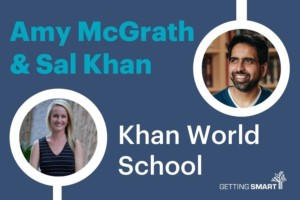Launching New School Models in Phoenix
Key Points
-
In the summer of 2021, ASU approved ASU Prep Pilgrim Rest as the 11th school within the ASU Prep Phoenix-based network.
-
This set off a year-long journey to design and build a new school model with an innovative program designed to serve the historically Black, and now mostly Latinx neighborhoods southeast of downtown Phoenix.

As one of the fastest growing communities in the United States, Phoenix has a robust set of choices for students bolstered by a large number of public charter schools and a set of legal permissions enabling students to attend private schools using scholarship tax credits and Education Savings Accounts. Pre-pandemic, the learning ecosystem in Arizona produced one of the highest rates of academic growth in the country, especially for those students who qualify for Free and Reduced Lunch programs.
Arizona State University serves as a university charter school authorizer in the state – operating ASU Prep, a network of charter schools (including ASU Prep Digital – a virtual school) in Arizona.
In the summer of 2021, ASU approved ASU Prep Pilgrim Rest as the 11th school within the ASU Prep Phoenix-based network. ASU Prep had entered into a partnership with Pilgrim Rest Church who owned a vacant building next to the East Lake Community Center. This set off a year-long journey to design and build a new school model with an innovative program designed to serve the historically Black, and now mostly Latinx neighborhoods southeast of downtown Phoenix.
Community involvement
ASU Prep leadership, in partnership with the community, brought together a group of engaged local leaders to imagine the design of the new school. The design committee built a vision for the school, created a coherent profile of a learner and developed the learning experience blocks. Through a series of workshops, the committee described the future that the young people in the community would live in as adults (both challenges and opportunities) and articulated the knowledge, skills and dispositions required to meet those challenges.
This process informed the creation of a Profile of a Learner for the school (now being modified and adopted for the whole ASU Prep network). This profile serves as the North Star for the school to ensure that every learner meets the same high expectations. As part of a school network, Pilgrim Rest benefits from a set of core beliefs that serve as a foundational learning model for all network schools. These include:
- The future of learning is personalized
- The future of learning builds community
- The future of learning is limitless
- The future of learning offers pathways
- The future of learning is real world
- The future of learning fosters belonging
With the profile completed and the core beliefs reviewed, the committee created learning experiences that would meet the profile.
Design
The following eight elements describe the learning experiences.

Access
With any new school opening, it is important to broadcast the opportunity widely to all potential families. The Pilgrim Rest team has canvassed local neighborhoods, met with other local educators, interacted with non-profits, hosted weekly open houses and promoted these opportunities via social networks and radio. The goal is access and these efforts will continue throughout the summer.
Next steps
With a strong leadership team led by Heidi Alexander, the founding principal, and the ASU Prep network, the focus has now shifted to operations, new teacher onboarding, community building and curricular/instructional preparations for the first year of the school.
Important elements
As with any new school, a few elements provide increased leverage to build the best model possible with access to as many learners as possible.
- Design with the end in mind. When school designers begin with a profile of a learner, it provides coherence and focus that aligns the school model.
- Partner with networks or other schools to get better faster. Networks help accelerate new school development with operational and pedagogical support.
- Listen to the community…and then listen more. When we listen to the community we ensure that the final school model is inclusive and accessible. Educators who launch schools often have innovative ideas – and these should be incorporated – but only in respect to meeting the needs of all learners.
- Find great leaders and great founding teachers. Founding a school is one of the most rewarding and challenging opportunities an educator can have. Finding the right team with aligned philosophies and deep belief in the mission can go a long way toward a successful launch. Check out open positions here if you are ready for this challenge.
- Communicate often with stakeholders. Transparency is critical. Updates, offerings, feedback sessions, surveys, etc. throughout the pre-launch year go a long way to fostering and building a strong culture and climate in the new school community.






0 Comments
Leave a Comment
Your email address will not be published. All fields are required.